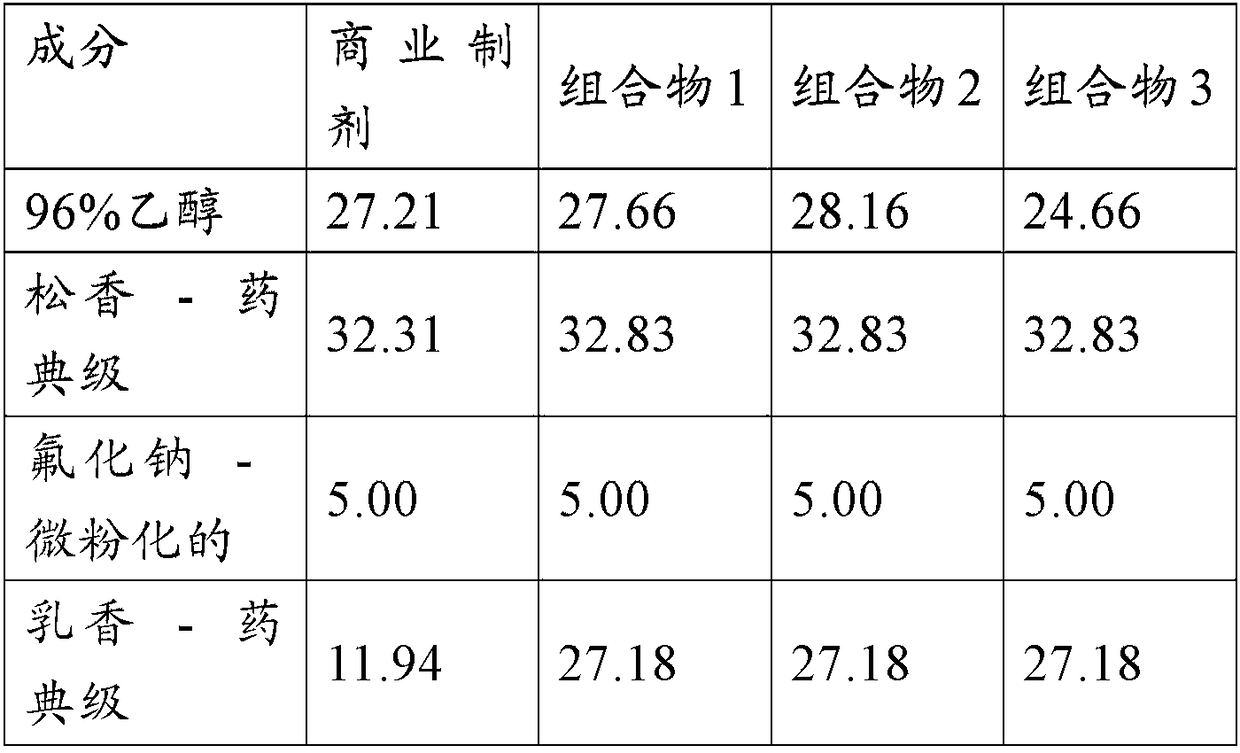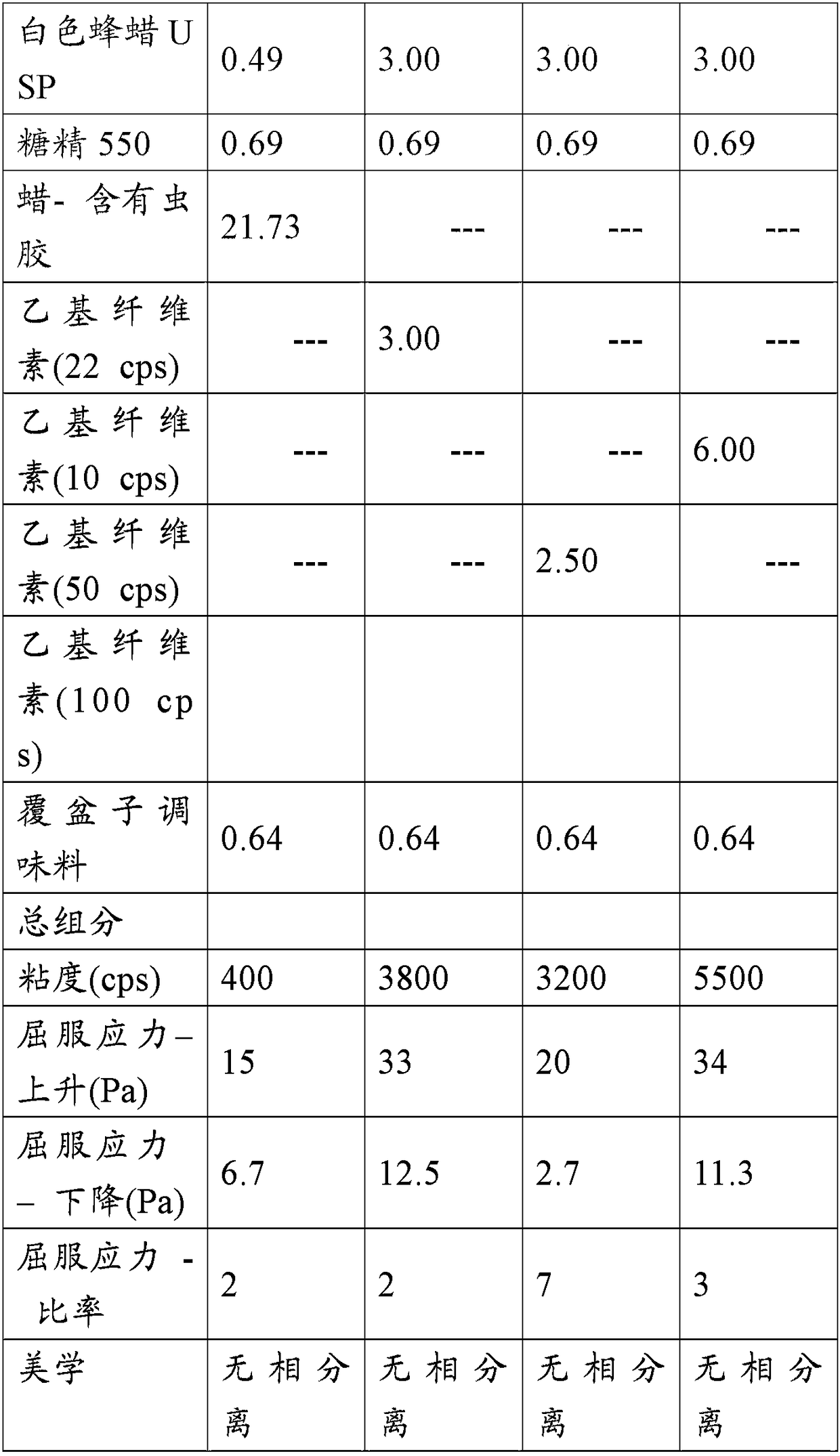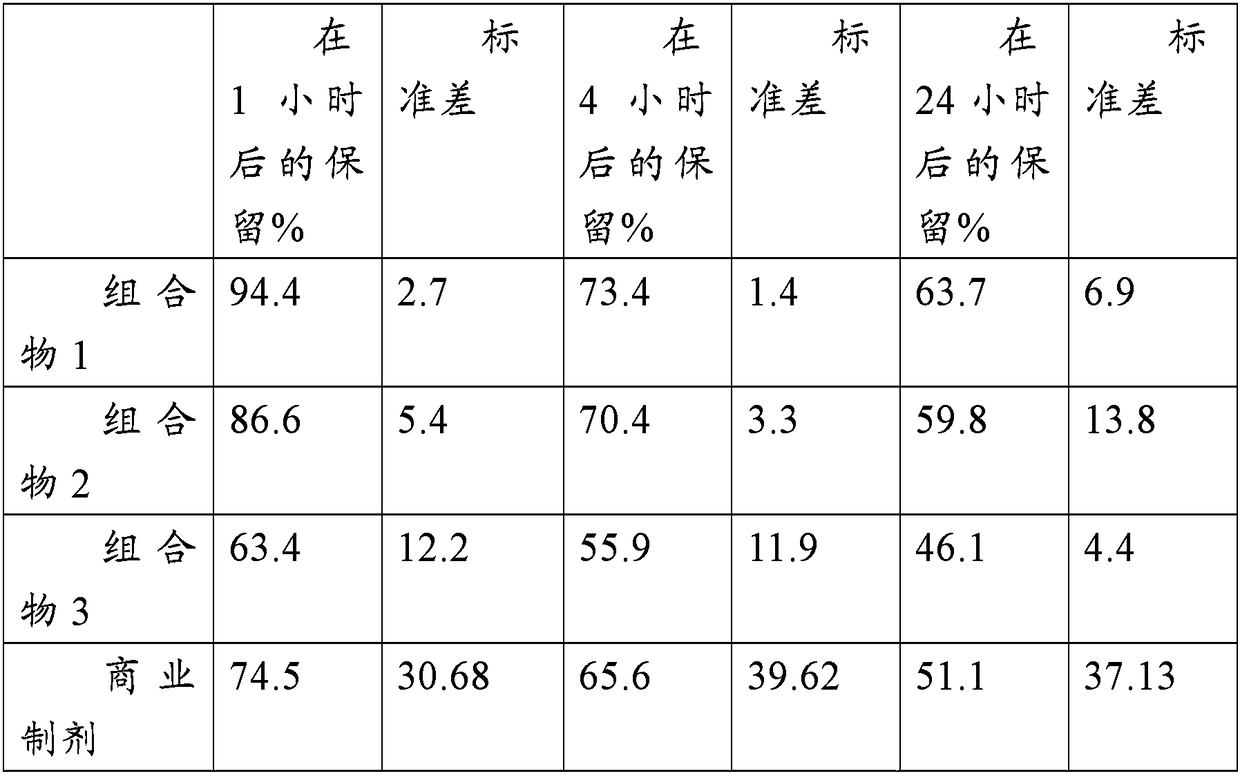Compositions for dental varnishes and methods of making and using same
A technology of protective paint and composition, which can be used in cosmetic preparations, medical preparations containing active ingredients, dentistry, etc., and can solve problems such as inconsistent effectiveness
- Summary
- Abstract
- Description
- Claims
- Application Information
AI Technical Summary
Problems solved by technology
Method used
Image
Examples
example 1
[0062] Example 1 - Phase Separation
[0063] The dynamic viscosity of the tooth protection varnish composition is measured over a range of shear stresses. Table 1 shows the compositions tested. Commercial compositions are previous tooth protection lacquer compositions including shellac. Composition 1 is comprised of 3.00% of Hercules Corp Dental varnish composition of N-22 ethylcellulose. Composition 2 is a tooth care varnish composition according to the embodiments described herein, which includes 2.5% of the Hercules Corp. N-50 ethylcellulose. Composition 3 is a tooth care varnish composition according to the embodiments described herein comprising 6.00% of Hercules Corp. N-10 ethyl cellulose. Viscosity was measured using a Brookfield viscometer with a v74 spindle at a shear rate of 1 revolution per minute (RPM). Most of the data points measured are between 10% torque and 100% torque. FitFlowYS software was used to calculate viscosity using fitting parameters n =...
example 2
[0069] Example 2 - Retention on Enamel Surfaces
[0070] Bovine enamel samples were coated with Composition 1, Composition 2, Composition 3 and the commercial formulations specified in Table 1. Samples were tested for retention of the composition on the enamel surface. Specifically, a uniform coating of protective lacquer is applied to the sample, and the sample is then weighed. Each sample was then placed in a container containing artificial saliva in an incubator with constant shaking of the container. After one hour, the sample was removed from the container, dried and weighed. The samples were placed in fresh artificial saliva, removed from the container after a total of 4 hours, dried, and reweighed after 4 hours. This process was repeated for 24 hours. Table 2 shows the mean and standard deviation of the varnish retention of the tooth varnish compositions on bovine enamel at different times. The protective paint retention of compositions 1-3 containing ethyl cellu...
example 3
[0073] Example 3 - Fluorine release
[0074] Fluoride release was measured for Composition 1, Composition 2, Composition 3 and commercial formulations of Table 1 per gram of protective varnish applied to the enamel surface. Fluoride release was measured by cutting bovine tooth enamel samples and preparing the samples to fit the ends of 1 / 4 inch Plexiglas rods. The size of the specimen is 6x6mm 2 . The edges of the specimen are covered with nail polish so that only the enamel is exposed. Rods with specimens are identified with a unique specimen number and placed on an analytical balance (0.0001 g). The balance was calibrated and the exposed enamel surface was coated with the test material and allowed to cure in the manner described in the manufacturer's instructions. This results in a size of 36mm 2 A uniform size sample of a protective paint having the quality of the protective paint measured on the surface. Six samples of each composition of Table 1 were prepared. Th...
PUM
| Property | Measurement | Unit |
|---|---|---|
| yield stress | aaaaa | aaaaa |
| yield stress | aaaaa | aaaaa |
Abstract
Description
Claims
Application Information
 Login to View More
Login to View More - R&D
- Intellectual Property
- Life Sciences
- Materials
- Tech Scout
- Unparalleled Data Quality
- Higher Quality Content
- 60% Fewer Hallucinations
Browse by: Latest US Patents, China's latest patents, Technical Efficacy Thesaurus, Application Domain, Technology Topic, Popular Technical Reports.
© 2025 PatSnap. All rights reserved.Legal|Privacy policy|Modern Slavery Act Transparency Statement|Sitemap|About US| Contact US: help@patsnap.com



